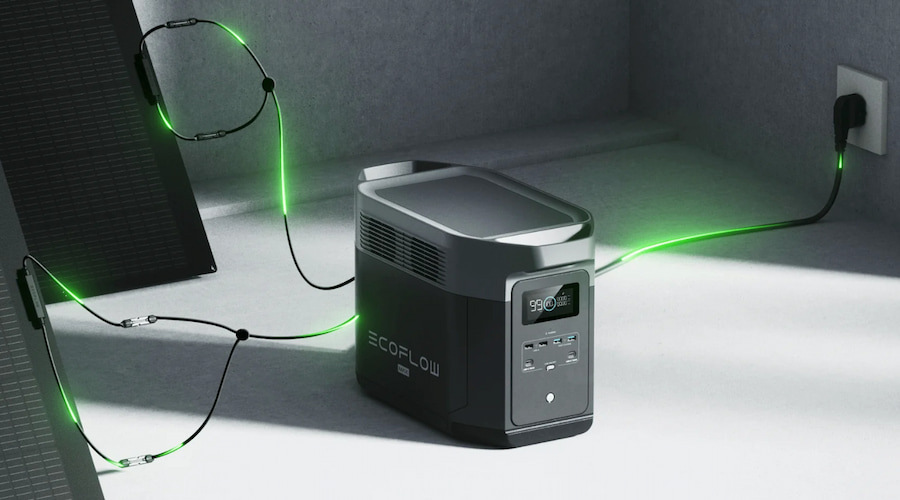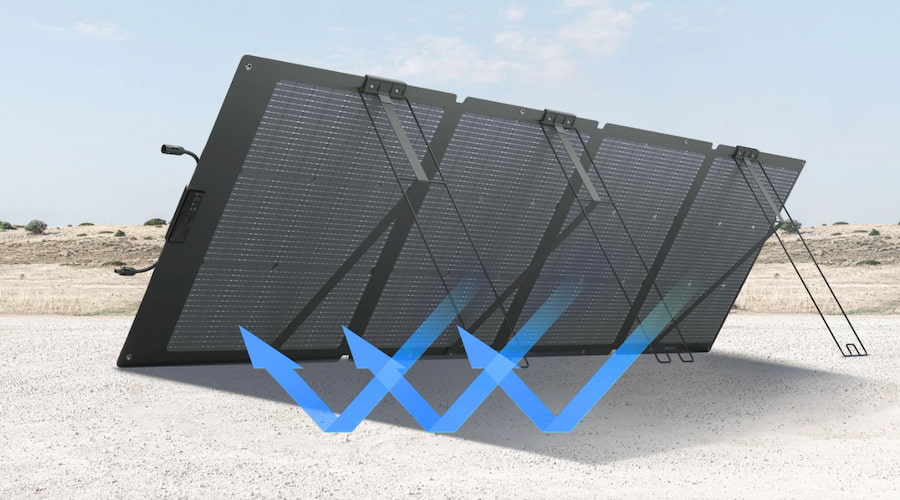Washing Machine Power Consumption: Costs, Usage & Energy Tips
If you’ve ever looked at your electricity bill and wondered where all that energy’s going, your washing machine might be one of the usual suspects. It’s one of those appliances you use on autopilot—toss in the clothes, hit a button, and move on. But behind the scenes, it’s using more power than you might expect.
Knowing a bit about washing machine power consumption can help you stay on top of your energy costs. In this guide, we’ll walk you through how much energy a washing machine typically uses, how that translates to dollars on your bill, what affects its power use, and a few simple ways to save.
How Much Energy Does a Washing Machine Use?
If you’re wondering how much energy do washing machines use, it can vary quite a bit depending on the model, size, cycle type, and whether it heats the water (which uses the most energy). On average, most washing machines use between 400 to 1,500 watts per hour, with larger, less efficient models reaching 2,000 watts.
Front loaders are generally more energy-efficient and use less water compared to top loaders. And the Energy Star Ratings are a good guide—more stars (like 4 or 5) mean better efficiency over the life of the appliance.
To give you a clearer picture, here’s an overview of common laundry machine wattages and their energy use:
Capacity | Type | Energy Star Rating | Washer Machine Watts | Average Energy Use per Load (kWh) |
5kg (Small) | Front Loader | 4–5 stars | 400–800 W | 0.3–0.7 kWh |
Top Loader | 2–3 stars | 600–1000 W | 0.6–1.0 kWh | |
7.5kg (Medium) | Front Loader | 4–5 stars | 500–1200 W | 0.6–1.0 kWh |
Top Loader | 2–3 stars | 800–1500 W | 0.9–1.4 kWh | |
10kg (Large) | Front Loader | 4–5 stars | 1000–1800 W | 0.9–1.5 kWh |
Top Loader | 2–3 stars | 1200–2000 W | 1.2–1.8 kWh |
What’s the Cost of Running a Washing Machine?
Once you know how much energy your washing machine uses, the next question is: how much is it actually costing you? The answer depends on a few things—mainly your washing machine electricity consumption, how often you do laundry, and your electricity rate.
Right now, electricity rates in Australia typically range from 25 to 45 cents per kWh, depending on your provider and state. That means a single load could cost you anywhere from a few cents to nearly 70 cents, depending on the machine and settings.
To give you a ballpark, here’s what the average cost might look like based on a mid-range electricity rate of $0.30 per kWh:
Machine Type | Avg. Energy Use (kWh/load) | Est. Cost per Load (@ $0.30/kWh) | Loads per Week | Est. Weekly Cost | Est. Annual Cost |
Front Loader (Efficient, 7.5kg) | 0.7 kWh | $0.21 | 4 | $0.84 | ~$44 |
Top Loader (Standard, 7.5kg) | 1.2 kWh | $0.36 | 4 | $1.44 | ~$75 |
Large Front Loader (10kg) | 1.4 kWh | $0.42 | 5 | $2.10 | ~$110 |
For a broader view, here’s how washing machine running costs compare across energy efficiency ratings, based on recent data from Canstar Blue, assuming three warm-wash cycles per week and an average electricity rate of 32.1c/kWh:
Star Rating | Average Annual Energy Use | Estimated Annual Cost |
1 to 2 Stars | 233 kWh | $75 |
2.5 to 3.5 Stars | 183 kWh | $59 |
4 to 4.5 Stars | 123 kWh | $39 |
5 to 5.5 Stars | 95 kWh | $30 |
What Factors Impact Washing Machine Power Consumption?
Even if two households have the same machine, the amount of power it uses can differ a lot based on how and when it’s used. Here are the key factors that influence your washer power consumption:
Wash Temperature
Hot washes use a lot more energy than cold ones—mostly because heating water is one of the biggest power consumption in washing machine. A warm or hot wash can double or even triple the energy drains compared to a cold wash.
Machine Type and Efficiency Rating
Front loaders are generally more energy-efficient than top loaders. They’re designed to use less water and have longer but gentler cycles, which also spin faster—meaning less time (and cost) in the dryer.
The Energy Star Rating is your go-to indicator. More stars mean better efficiency. A 5-star front loader will use far less energy over time than a 2-star top loader.
Load Size and Frequency
It might seem harmless to throw in a small load when you’re in a rush, but doing that regularly can bump up your annual energy use. Washing machines tend to use almost the same amount of energy regardless of how full they are.
Wash Cycle Type
Eco modes use less energy and water, but they usually take longer. Quick cycles can be convenient, but they sometimes use more power to get clothes clean in a shorter time.
How Can You Reduce Washing Machine Energy Costs?
Want to reduce your washing machine power usage and save on electricity bill? Here are some practical tips to help you wash just as often while spending less:
Wash with Cold Water
Heating water is one of the biggest energy drains in any wash cycle. Unless you’re dealing with heavily soiled items, cold water is more than enough—especially with modern detergents that are made to work effectively in cooler temps.
Only Run Full Loads
Every time you run a load, your machine uses roughly the same amount of energy—regardless of how full it is. To make each wash as efficient as possible, wait until you have a full load before pressing start, but don’t overload either.
Use Eco or Energy-Saving Modes
Most modern washing machines come with an Eco setting, which uses less water and electricity. It might take a bit longer to run, but it’s much gentler on your energy bill.
Avoid High Spin Speeds Unless Needed
Higher spin speeds use more energy and can be tougher on clothes. Unless you’re trying to reduce dryer time, a medium spin is usually more than enough.
Clean and Maintain Your Machine
A clogged filter or buildup inside the drum can make your machine work harder than it needs to. Regular maintenance keeps it running efficiently—and extends its life, too.
Upgrade to an Energy-Efficient Model
If your current machine is more than 8–10 years old, upgrading to a new front loader model with a higher Energy Star Rating can make a noticeable difference. Even going from a 2-star to a 4-star model could save you over $40 a year, just in electricity.
Look for washing machines with load-sensing technology. This feature automatically adjusts the water and energy used based on the size of your laundry load, preventing waste.
Wash During Off-Peak Times (If You’re on Time-of-Use Rates)
Some energy plans offer cheaper electricity during off-peak hours—typically late at night or early morning. If your schedule allows, timing your washes during these periods can save you even more.
Invest in Solar and Home Backup Power
If you’re serious about cutting long-term energy costs—and want more control over your power use—investing in solar panels and backup power is a smart move. A solar generator (solar panel + portable power station) lets you harness the sun’s energy, store it, and use it to handle the wattage for powering a house, including the load of your washing machine.
Unlike traditional rooftop solar setups, plug-and-play solar generators are compact, portable, and easy to use. They’re also a reliable backup during blackouts or peak usage times, giving you flexibility and peace of mind.


A great example is the EcoFlow DELTA 2 Portable Power Station.With a starting capacity of 1024Wh, it can power your everyday appliances for hours. Need more? You can expand it up to 3040Wh with extra batteries. It delivers 1800W of running AC output and 2400W surge output, meaning your washing machine, microwave, or fridge are all among appliances that portable power station runs.
The DELTA 2 charges fast (0–100% in 80 minutes via AC), lasts for years (3000+ cycles with LiFePO4 battery tech), and can be managed remotely using the EcoFlow app over Wi-Fi or Bluetooth.


Pair it with the EcoFlow NextGen 220W Bifacial Portable Solar Panel and you’ve got a compact, high-efficiency solar setup. Its dual-sided design can capture up to 25% more solar energy, and it’s built tough with durable glass and an IP68 rating—perfect for Aussie conditions. The adjustable angle bracket and integrated solar guide also help you maximise performance wherever you are.
Whether you’re off-grid, at home, or preparing for emergencies, investing in such a solution with the best solar batteries and panels gives you clean, reliable power—without relying entirely on the grid.
Conclusion
As you’ve seen, washing machine power consumption can vary quite a bit depending on the type of machine you have, its energy star rating, how often you use it, and a few habits you might not think twice about. Now that you’ve got a clearer picture, you’re in a better position to take control of those running costs. Small changes like switching to cold washes or running full loads can make a real difference on your next power bill. And if you’re in the market for a new machine, opting for a 5-star front loader with load-sensing tech and eco mode will help you save big in the long run.
FAQs
What’s the best time to run a washing machine?
The best time to run a washing machine is during off-peak hours, typically late at night or early in the morning. Electricity rates are usually lower during these times, which can help reduce overall energy costs. Check with your energy provider to identify the exact off-peak hours in your area.
Is it more efficient to use hot water or cold water in a washing machine?
Using cold water is generally much more energy-efficient. Heating water uses a significant amount of electricity—often the biggest contributor to a washing machine’s power consumption. For most everyday loads, especially with modern cold-water detergents, cold washes clean just as effectively while using up to 80% less energy than hot washes.
Does the load size affect power consumption?
Yes, the load size directly impacts power consumption. Overloading a washing machine can reduce its efficiency, as the machine works harder to clean the clothes. On the other hand, running small loads wastes energy and water. To optimize efficiency, try to match the load size with the machine’s recommended capacity.